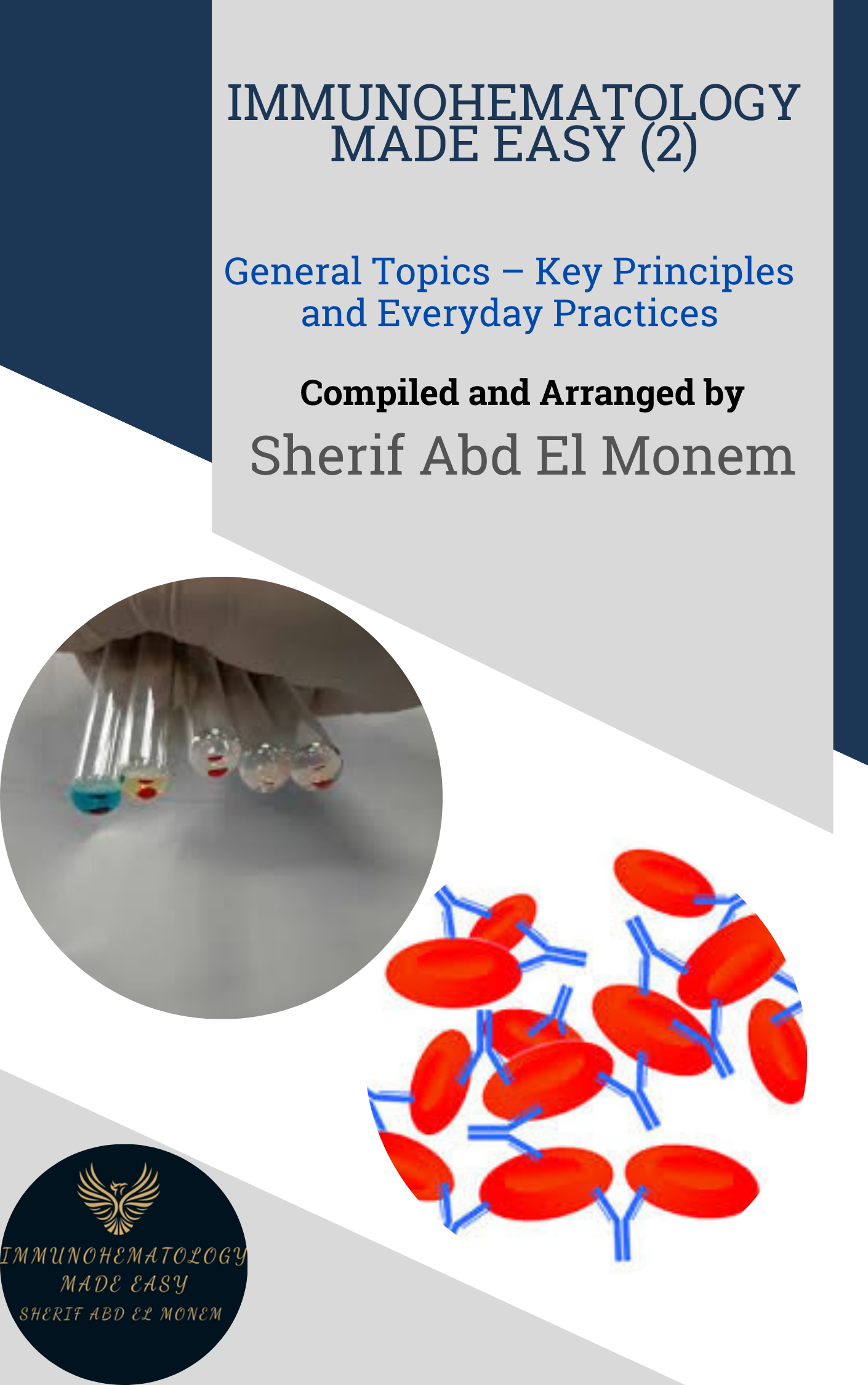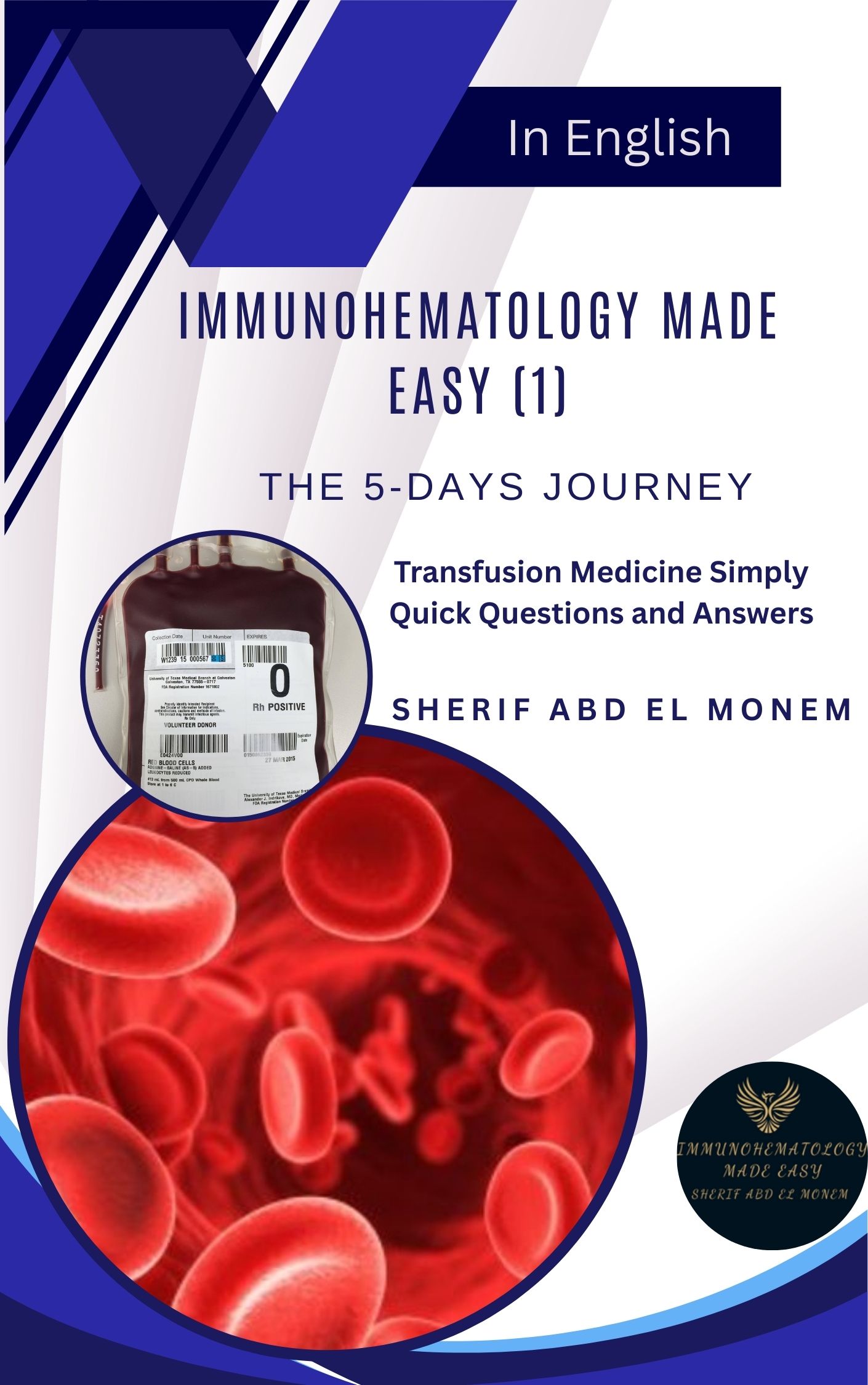Blood Bank Genetics
Transcript summary in points
Blood Bank Genetics
Introduction to Genetics in Blood Banking
Blood group antigens are determined by genes.
Genes are the fundamental units of heredity that dictate the characteristics of blood groups.
Genes are located at specific locations on chromosomes called loci (singular: locus).
Chromosomes are the structures within cells that carry genes.
The table shown in the presentation illustrates the locations of genes for main blood group systems on different chromosomes.
Alleles and Polymorphism
Allele: Any alternative form of a gene that can occupy the same locus on a chromosome.
Different alleles of a gene result in variations in blood group antigens.
Polymorphic Gene: A gene is considered polymorphic if more than one allele occupies that gene’s locus within a population.
This means there is variation in the gene within the population.
Frequency Criterion for Polymorphism: For a gene to be generally considered polymorphic, each allele must occur in a population at a rate of at least one percent.
This frequency threshold distinguishes common genetic variations from rare mutations.
RH Blood Group System as Highly Polymorphic: The RH blood group system is highlighted as an example of a highly polymorphic blood group system.
This system exhibits a significant degree of genetic variation within the population.
Chromosomes and Sex Chromosomes
Chromosomes are structures composed of DNA and protein found in cells.
They are the carriers of genetic information.
Humans have a total of 46 chromosomes.
This is the diploid number of chromosomes in human somatic cells.
Autosomes: 22 pairs (44 total) of chromosomes are autosomes.
Autosomes are chromosomes that are not sex chromosomes.
Sex Chromosomes: One pair of sex chromosomes determines the sex of an individual.
XX for females: Females have two X chromosomes.
XY for males: Males have one X and one Y chromosome.
Homozygous, Heterozygous, and Hemizygous
Homozygous: Having identical alleles at the same chromosomal loci.
For a specific gene, an individual inherits the same allele from both parents.
Heterozygous: Having two different alleles at the same chromosomal loci.
For a specific gene, an individual inherits different alleles from each parent.
Hemizygous: Having only one copy of a chromosome or gene.
Most common example: X-linked genes in males.
Males have only one X chromosome (XY), so they are hemizygous for genes on the X chromosome.
If a male inherits a recessive allele on his X chromosome, it will be expressed because there is no second allele to mask it.
Inheritance Patterns
Dominant: A gene that will produce its gene product (trait) over another gene (allele).
If a dominant allele is present, the trait associated with that allele will be expressed, even if a recessive allele is also present.
Recessive: A gene that is only observable (expressed) when not paired with a dominant allele.
For a recessive trait to be expressed, an individual must inherit two copies of the recessive allele (homozygous recessive).
Amorphic (Null): A gene that does not express a detectable product.
Example: O blood group.
The O allele is often considered amorphic because it does not produce functional A or B transferases.
Codominant: Equal expression of both traits in a heterozygous state.
If an individual is heterozygous, both alleles are expressed simultaneously, and neither is masked.
Many blood group systems exhibit codominant inheritance.
Antithetical Alleles
Definition: Antithetical is a term used to describe allelic antigens that are opposite of each other.
These are antigens determined by alleles at the same locus.
Pairing: Antithetical alleles usually occur in pairs, but there can be more than two alleles at a locus in some systems.
Example: Kpa and Kpb are examples of antithetical alleles in the Kell blood group system.
An individual can have Kpa antigens, Kpb antigens, both (if heterozygous), or neither (though rare for common antithetical pairs).
Heterozygous Expression: If an individual is heterozygous for antithetical alleles, they have one copy of each allele on opposite chromosomes.
Importance in Blood Banking – QC Controls: Knowing antithetical alleles is important for selecting positive controls for antiserum quality control (QC).
For QC, heterozygous expression is often desired.
Example: For QC of anti-Jkb, a cell with heterozygous expression (Jka+Jkb+) would be ideal as a positive control.
Anagram Cell 2 Example: In the anagram (likely a table of cell phenotypes shown in the presentation), cell 2 is identified as an appropriate positive control for anti-Jkb because it is heterozygous for Jka and Jkb.
Dosage Effect
Definition: Dosage effect is a significant difference in antibody reaction strength depending on the quantity of the target antigen present on the red blood cell.
Quantity of Antigen: Homozygous cells have more antigen sites than heterozygous cells.
Reaction Strength Example:
Homozygous for Jka: Reagent red cells homozygous for Jka may react strongly (e.g., 3+ or 4+) with anti-Jka antibody.
Heterozygous (Jka and Jkb): A heterozygous cell with both Jka and Jkb genes present may react weakly (e.g., 1+) or not at all with the same anti-Jka antibody.
This weaker reaction in heterozygotes compared to homozygotes is the dosage effect.
Phenotype vs. Genotype
Phenotype: An observed trait.
In blood banking, phenotype is determined by using antisera to test red blood cells for the presence of specific antigens.
Red cells cannot be genotyped directly: Mature red blood cells do not have DNA (nucleus), so they cannot be genotyped.
Genotype: The genetic makeup of an individual.
Genotype can be determined by extracting DNA from patient or donor white blood cells (which have nuclei).
Genotyping provides a predicted phenotype based on the detected alleles.
Predicted vs. True Phenotype from DNA: Genotyping gives a predicted phenotype, not a true phenotype.
The true phenotype is still determined by serological testing of red cells with antisera. Genotyping predicts what antigens should be present based on the DNA.
Mendelian Genetics and Laws
Gregor Mendel: Father of Modern Genetics: Mendel is recognized for his work with pea plants, which laid the foundation for understanding inheritance.
He proposed that traits are inherited through genes.
Alleles as Versions of Genes: Different versions of genes are called alleles.
Alleles can be dominant, recessive, or co-dominant.
Mendel’s Law of Random Segregation (First Law):
Alleles segregate randomly into gametes (sperm and egg cells) during gamete formation (meiosis).
Each parent has two alleles for each gene, but gametes carry only one allele for each gene.
Half of the parent’s gametes carry one allele, and the other half carry the other allele.
Offspring inherit one allele from each parent (one from the mother, one from the father).
Application: Punnett Squares: This law is the basis for using Punnett squares to predict offspring genotypes and phenotypes.
By knowing the parents’ genotypes or phenotypes, Punnett squares can illustrate the probabilities of different allele combinations in their children.
Mendel’s Law of Independent Assortment (Second Law):
Alleles of different genes will assort (segregate) independently of each other during meiosis, provided they are on different chromosomes.
Example: Eye color and blood group inheritance should sort separately because they are typically on different chromosomes.
Exception: Linkage: Genes that are very close to each other on the same chromosome may be inherited together. This is called genetic linkage.
First Recognized Example of Linkage: The secretor gene (SE) and the Lutheran gene (LU) were among the first examples of linked genes identified in blood groups.
Linkage Disequilibrium: Refers to a statistical association between allelic variants within a population that is greater than expected by chance, due to factors like:
History of recombination (less recombination between closely linked genes).
Mutation (a new mutation may initially be linked to nearby alleles).
Selection (if certain combinations of alleles are advantageous).
Blood Banking Examples of Linkage Disequilibrium:
HLA (Human Leukocyte Antigen) system and MNS blood group system.
RH blood group system.
Kidd (JK) blood group system.
These systems often show non-random associations of alleles across loci.
Example of Independent Assortment (Despite Linkage Disequilibrium): Even with linkage disequilibrium, alleles can still be inherited in different combinations.
You can have an ‘A’ blood type with a ‘Big K’ (Kell positive) and an ‘O’ blood type also with a ‘Big K’.
This illustrates that while linkage disequilibrium exists, recombination and independent assortment still occur, allowing for diverse combinations of alleles.
Punnett Squares and Pedigree Charts
Punnett Squares: Used to illustrate the probabilities of phenotypes and genotypes from known or inferred parental genotypes.
Visual tool to predict offspring genotypes and phenotypes based on Mendelian inheritance.
Pedigree Charts: Useful tools for visualizing inheritance patterns when performing a family study.
Graphical representation of family relationships and the inheritance of traits across generations.
Symbols Used in Pedigree Charts: (Examples were likely shown visually in the presentation – these would typically include symbols for male, female, affected, unaffected, carriers, deceased, etc.)
Autosomal Dominant Traits
Appearance in Pedigrees: Appear in every generation, with no skipping generations.
Transmission: Trait is transmitted by an affected person to approximately half of their children.
Unaffected Individuals: An unaffected person will not transmit the trait to their children.
Sex Influence: The occurrence and transmission of the trait are not influenced by sex.
Males and females are equally likely to have or to transmit the trait.
Examples of Autosomal Dominant Traits (likely shown visually): Examples in blood groups are less common as most are co-dominant or recessive.
The presentation likely used general examples of autosomal dominant traits for illustration.
Pedigree Pattern (Visual): Pedigree examples would show affected individuals in every generation, with roughly 50% of offspring affected when one parent is affected.
Autosomal Recessive Traits
Appearance in Pedigrees: Often appear in siblings, but not necessarily in parents or offspring.
Frequency in Siblings: On average, only 25 percent of siblings will be affected when both parents are carriers.
Recurrence Risk: Reoccurrence risk is one in four (25%) for each birth if both parents are carriers.
Consanguinity: More commonly seen in consanguineous relationships (relationships between individuals who are closely related).
Consanguinity increases the chance of inheriting two copies of a recessive allele.
Sex Influence: Males and females are equally likely to be affected.
Pedigree Pattern (Visual): Pedigree examples would show unaffected parents having affected children, with siblings often affected, and potentially seen in families with consanguinity.
X-Linked Dominant Traits
Affected Daughters of Affected Men: All daughters of a man expressing a dominant X-linked trait will inherit the allele and express the trait.
Affected fathers pass their X chromosome to all daughters, but no X to sons.
No Father-to-Son Transmission: There will be no father-to-son transmission of the trait.
Children of Heterozygous Affected Women: Children of a heterozygous woman expressing the trait have a 50% chance of inheriting the allele (and expressing the trait).
Children of Homozygous Affected Women: All children of a homozygous woman will express the trait.
Distinguishing from Autosomal Dominant: Inheritance patterns can be distinguished from autosomal dominant only by examining the offspring of affected males.
Pedigree Pattern (Visual):
Heterozygous Mother Example: A heterozygous mother passes the trait to 50% of her children (both sons and daughters).
Affected Father Example: When the male is affected, all daughters are affected, but no sons are affected.
X-Linked Recessive Traits
Frequency in Sexes: Much higher incidence in males than in females.
Males only need to inherit one copy of the recessive allele to be affected (hemizygous). Females need two copies (homozygous recessive).
Transmission from Affected Men: Traits are passed from an affected man through all his daughters (who become carriers) to half of their sons (who may be affected).
No Father-to-Son Transmission: The trait is never transmitted directly from father to son (because fathers give sons a Y chromosome, not an X).
Skipping Generations: May skip generations, appearing to “reappear” in male descendants through carrier females.
Pedigree Pattern (Visual):
Mother as Carrier Example: Pedigree on the left likely showed a carrier mother passing the trait to half of her sons.
Skipping Generation Example: Pedigree on the right showed skipping a generation, where a female carrier transmits the trait to her grandsons through her sons.
Y-Linked Traits
Transmission Pattern: Resemble X-linked traits in that they are sex-linked, however, they are transmitted only from father to son.
No Transmission to Daughters: Never transmitted to daughters as daughters do not inherit a Y chromosome.
All Sons of Affected Fathers Affected: All sons of affected fathers will be affected because they all inherit the Y chromosome from their father.
Pedigree Pattern (Visual): Pedigree would show affected fathers having only affected sons, and no daughters affected.
Hardy-Weinberg Equation
Derivation: Derived from a Punnett square for a two-allele system.
Equation: p + q = 1 (for allele frequencies), and p² + 2pq + q² = 1 (for genotype frequencies).
p represents the frequency of one allele.
q represents the frequency of the alternative allele.
p² represents the frequency of the homozygous genotype for allele p.
q² represents the frequency of the homozygous genotype for allele q.
2pq represents the frequency of the heterozygous genotype.
Purpose: Can be used to calculate allele and genotype frequencies in a population when the frequency of one genetic trait (phenotype) is known.
Assumptions of Hardy-Weinberg Equilibrium:
No Selection: Individuals of each genotype must be equally reproductively fit (no natural selection favoring any genotype).
Large Population Size: The population must be large to avoid random fluctuations in allele frequencies due to genetic drift.
Random Mating: Mating must be random with respect to the trait being considered (no assortative mating).
Applying Hardy-Weinberg Equation – Problem Solving
Initial Question: When tackling Hardy-Weinberg problems, first determine what the question is asking for.
Gene Frequencies: If the question asks for gene frequencies, use the equation p + q = 1.
Questions might ask: “What is the frequency of the ‘blank’ gene?” or “What is the frequency of the alternative (antithetical) gene?”
Phenotype/Genotype Frequencies: If the question asks for phenotype or genotype frequencies, use the quadratic formula p² + 2pq + q² = 1.
Questions might ask: “What is the frequency of heterozygous people?” “What is the frequency of homozygous people?” or “What is the frequency of carriers?”
Blood Bank Example: Two-Allele System (Jka/Jkb)
Allele Frequencies:
p = frequency of the Jka allele.
q = frequency of the Jkb allele.
Genotype Frequencies:
p² = frequency of the Jka homozygous genotype (Jka+/Jka+).
2pq = frequency of the heterozygous genotype (Jka+/Jkb+).
q² = frequency of the Jkb homozygous genotype (Jkb+/Jkb+).
Example Problem 1: Jkb Frequency Calculation
Problem Statement: Anti-Jka reacts with 77 percent of a population. What is the frequency of Jkb persons?
Start with What You Know: Anti-Jka reacts with individuals who have the Jka antigen. This includes both homozygous (Jka+/Jka+) and heterozygous (Jka+/Jkb+) individuals.
Given Phenotype Frequency: The 77% reacting with anti-Jka represents p² + 2pq (frequency of Jka+ phenotype).
Question: Find the frequency of Jkb persons. This includes both heterozygous (Jka+/Jkb+) and homozygous (Jkb+/Jkb+) individuals, which is represented by 2pq + q².
(Note: The presentation likely intended to ask for the frequency of Jkb positive persons, which would be 2pq + q², OR for the frequency of the Jkb allele, which is q. The wording in the transcript is slightly ambiguous, but solving for the frequency of Jkb positive individuals is more likely the intended problem given the context of blood banking and antigen frequencies.)
Example Problem 2: Gene and Genotype Frequencies from Counts
Problem Statement: Given the number of positive and negative reactions with anti-S, find gene frequencies (p and q) and the number of heterozygous people in the population. (Specific numbers from the example were likely presented visually).
Start with What You Know: Anti-S reacts with individuals who have the S antigen. This includes both heterozygous and homozygous individuals for the S allele.
Looking For: Gene frequencies (p and q) and the number of heterozygous individuals (2pq * population size).
Population Genetics in Blood Banking – Compatibility
Importance: Population genetics and phenotype frequencies are important for finding compatible blood for patients, especially those with antibodies.
Frequency Calculation for Compatible Units: Phenotype frequencies are used to calculate how many units of blood may be compatible for a patient.
Example: Anti-Jka Only: If a patient has only anti-Jka, only 23 percent of the population will be compatible (Jka negative frequency is 100% – 77% = 23%).
Multiple Antibodies: When a patient has multiple antibodies, calculate the frequency of compatible units by multiplying the frequencies of negative populations for each antigen.
Board Exam Relevance: This type of calculation (for multiple antibodies) is a common board exam question in blood banking.
Example: Anti-c, Anti-K, Anti-Jka: Patient has antibodies to little c, Big K, and Jka.
Multiply the frequencies of negative populations for each antigen to estimate the frequency of compatible units.
Example calculation provided: (Frequency of c-negative) x (Frequency of K-negative) x (Frequency of Jka-negative) = (likely given percentages in the presentation) resulting in approximately 4 out of 100 units being compatible.
Definitions and Glossary
Quick Slide with Definitions: A slide with definitions of key terms (like allele, homozygous, heterozygous, phenotype, genotype, etc.) was likely presented as a recap.
Neat Little Glossary: A glossary of terms was provided for reference.
Conclusion
“Have a wonderful day!” – Closing remark of the presentation.

Immunohematology Made Easy (2)
General Topics – Key Principles and Everyday Practices
📘 Available now in PDF & EPUB formats
🔗 Visit Store

📘 New to Blood Bank?
Start your 5-day journey with Immunohematology Made Easy — a simple, beginner-friendly guide with real-life examples!
👉 Get Your Copy Now